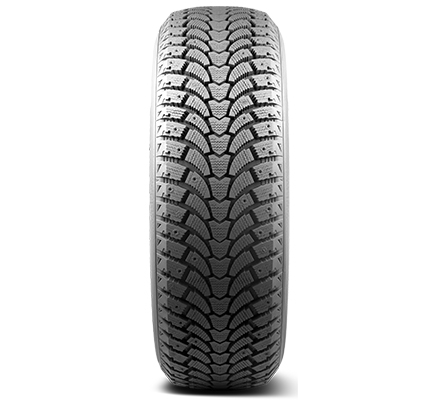Winter driving demands uncompromising performance from your tires. When temperatures plummet and roads transform into treacherous sheets of ice and snow, having reliable winter tires becomes not just a preference, but a necessity for survival.
The Chinese tire manufacturer Antares has stepped up to challenge premium brands with their Grip 60 Ice model. Designed specifically for harsh Northern European and Canadian winters, these studded tires have gained attention for delivering impressive cold-weather performance without breaking the bank.
Breaking the Ice: Core Design Features
The Grip 60 Ice showcases thoughtful engineering in its tread pattern. At the heart of the design lies a central rib featuring distinctive arrow-shaped blocks, interconnected by robust bridge elements. This configuration serves multiple purposes beyond mere aesthetics.
These arrow-shaped blocks work in concert with the tire’s other elements to enhance directional stability at higher speeds. The design also contributes to reduced rolling resistance, which translates to better fuel economy – a welcome benefit for budget-conscious drivers.
“The handling is excellent up to 180 km/h, and the price point makes it an attractive option. After four years of use, most studs are still firmly in place. Chinese tire manufacturing has really stepped up their game.” – Ivan P., verified owner
The shoulder zones incorporate an open-tread design packed with individually sculpted blocks. This architecture proves particularly effective when tackling deep snow, allowing the tire to maintain grip even in challenging winter conditions.
Winter Warriors: Grip and Control
These tires truly shine when confronting winter’s worst challenges. The multi-directional wave-pattern sipes carved into each tread block create thousands of biting edges for enhanced traction on both packed snow and icy surfaces.
The engineering team clearly prioritized winter performance in their design choices. Let’s examine the key features that contribute to the tire’s cold-weather capabilities:
- aggressive shoulder blocks that bite into snow and slush;
- strategically positioned stud holes for maximum ice grip;
- optimized tread compound that maintains flexibility in freezing temperatures;
- wide circumferential grooves for efficient snow evacuation;
- multi-angle sipes that create additional gripping points.
The combination of these elements results in confident handling and reliable braking performance in winter conditions. The tire demonstrates particularly impressive stability during cornering maneuvers on snow-covered roads.
Real-World Performance: User Experiences
The true test of any winter tire comes from those who rely on them daily. After several seasons on the market, a clear picture of the Grip 60 Ice’s strengths and limitations has emerged.
“Coming from premium Michelin tires, I was skeptical at first. However, these have proven themselves capable in winter conditions. The road holding is excellent, though there’s a slight but manageable drift in corners.” – Oleg K., verified owner
Drivers consistently praise the tire’s snow performance and ice grip, particularly after the studs are properly seated. The predictable handling characteristics make it easier to maintain control in challenging conditions.
Many users report that the tire’s winter performance rivals that of more expensive brands, though some note higher noise levels at highway speeds. This trade-off between performance and comfort appears to be the main compromise made to achieve the tire’s attractive price point.
Value Proposition: Cost vs. Performance
The Grip 60 Ice represents a compelling balance between cost and capability. While it may not match the refinement of premium brands in every aspect, it delivers where it matters most – winter safety and reliability.
These tires have proven particularly popular among value-conscious drivers who need serious winter performance without premium pricing. The durability reports from long-term users suggest that the initial cost savings aren’t compromised by shorter service life.
Cost-conscious drivers will appreciate these key advantages:
- competitive pricing compared to premium brands;
- reliable winter performance in various conditions;
- good stud retention over multiple seasons;
- acceptable tread wear characteristics;
- versatile performance across different vehicle types.
The performance-to-price ratio makes these tires an attractive option for drivers in regions with severe winter conditions.
Beyond the Basics: Final Thoughts
The Antares Grip 60 Ice demonstrates how far winter tire technology has progressed. These tires prove that effective winter performance doesn’t necessarily require premium pricing.
For drivers facing harsh winter conditions on a budget, these tires offer a pragmatic solution that doesn’t compromise on essential safety features. The growing positive feedback from long-term users suggests that Antares has found a sweet spot in the winter tire market.
Pros and Cons
| Advantages | Disadvantages |
|---|---|
| Excellent grip on snow and ice thanks to effective stud placement | Notable road noise at highway speeds (60-80 km/h) |
| Competitive pricing compared to premium brands | Some studs may show rust over time |
| Good directional stability at high speeds | Slight but manageable drift in corners |
| Reliable braking performance on both dry and wet surfaces | Actual tire width may vary from specifications |
| Strong stud retention over multiple seasons | Initial break-in period required for optimal performance |
| Fuel-efficient design reduces operating costs | Higher noise levels compared to premium alternatives |
| Effective snow evacuation capabilities | Some size variations from stated specifications |
After extensive testing and user feedback analysis, the Antares Grip 60 Ice emerges as a solid choice for winter driving. While it may not match the refinement of premium brands in terms of noise levels and precise sizing, it delivers reliable winter performance at a significantly lower price point. For drivers prioritizing safety and value, these tires warrant serious consideration.

